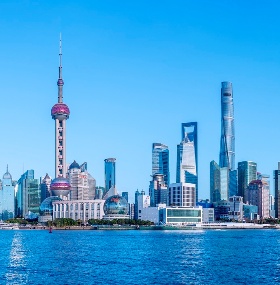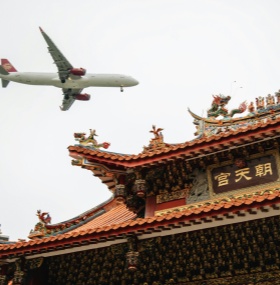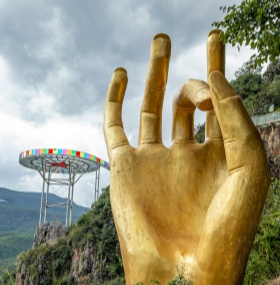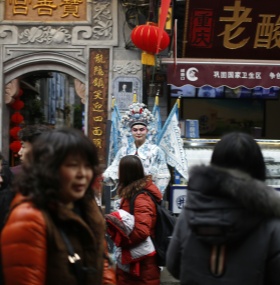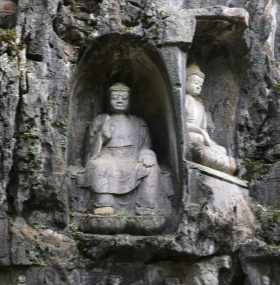China is a vast country with a diverse range of ecosystems, from towering mountains and dense rainforests to sprawling grasslands and remote deserts. The variety of landscapes supports an incredible range of wildlife, making it a dream destination for nature and wildlife photographers. Whether you're capturing the endangered giant panda in the Sichuan mountains, the exotic wildlife of Hainan's tropical rainforests, or the free-roaming herds of Inner Mongolia's grasslands, China offers abundant opportunities to photograph some of the world’s most fascinating and elusive creatures.
In this article, we will guide you through the top destinations for wildlife photography in China, where photographers can capture breathtaking moments of nature’s most beautiful and endangered species.
1. The Giant Panda: A Symbol of Wildlife Conservation
No discussion of wildlife photography in China would be complete without mentioning the giant panda. As one of the world’s most iconic and endangered species, the giant panda has become synonymous with China’s conservation efforts. These adorable creatures can be found in the mountainous regions of Sichuan, Shaanxi, and Gansu, where they roam in the bamboo forests and play a vital role in China’s biodiversity conservation programs.
Top Photography Locations for Giant Pandas:
Wolong National Nature Reserve (Sichuan): Located in the Qinling Mountains, Wolong is one of the best places to photograph giant pandas in the wild. Known for its rugged terrain and lush bamboo forests, Wolong offers a true wilderness experience, where photographers can capture pandas in their natural habitat. The Wolong Giant Panda Sanctuary provides great photo opportunities for close-up shots of pandas, especially during feeding times.
Chengdu Research Base of Giant Panda Breeding (Sichuan): For photographers who prefer to photograph pandas up close, the Chengdu Panda Base offers a more controlled environment. Although not in the wild, this world-renowned research facility provides an opportunity to see pandas in action—eating bamboo, interacting with cubs, and even playing in their enclosures. The base is surrounded by lush gardens and bamboo forests, offering beautiful backdrops for wildlife photos.
Photography Tips for Capturing Giant Pandas:
Capture pandas in motion as they interact with their surroundings, eat bamboo, or climb trees. Use a telephoto lens for candid shots, especially if you’re photographing pandas from a distance.
The best time to photograph pandas is during feeding hours or early in the morning when the light is soft and natural.
2. Hainan’s Tropical Rainforests: A Jungle Wonderland
China’s tropical rainforests, especially those in Hainan, are a haven for photographers interested in rainforest ecosystems and endemic wildlife. The island is home to several unique species that are rarely seen outside of Southeast Asia, making it a prime destination for wildlife photographers looking to capture exotic creatures in their natural habitats.
Top Photography Locations in Hainan’s Rainforests:
Wuzhishan Mountain: As one of the most biodiverse areas of Hainan, Wuzhishan (Five Finger Mountain) is a top location for wildlife photography. The mountain is home to the Hainan gibbon, one of the rarest primates in the world. Apart from gibbons, photographers can capture stunning images of other rainforest inhabitants such as monkeys, tropical birds, and butterflies. The mountain’s misty peaks and dense forests provide a dramatic backdrop for wildlife shots.
Hainan Tropical Rainforest National Park: Spanning more than 400,000 hectares, Hainan Tropical Rainforest National Park is a perfect destination for capturing the richness of tropical biodiversity. From rare birds and reptiles to lush plants, this park offers incredible opportunities for close-up shots of Hainan’s rich flora and fauna.
Photography Tips for Tropical Rainforest Photography:
Use a wide-angle lens to capture the dense jungle and sweeping views of the rainforest.
Be ready to adjust your ISO settings due to the low light conditions of the dense canopy, especially on cloudy days or early mornings.
Consider using a macro lens to photograph small insects or flowers, which thrive in these humid environments.
3. Inner Mongolia: A Land of Endless Horizons
For photographers looking for a unique landscape filled with wide-open spaces and roaming herds of animals, Inner Mongolia’s grasslands offer a one-of-a-kind experience. The vast Xilingol and Hulunbuir Grasslands are home to many wild and domesticated animals, including wild horses, sheep, and yaks. Photographers can capture these animals against the backdrop of dramatic skies, rolling hills, and distant mountains.
Top Photography Locations in Inner Mongolia:
Xilingol Grassland: Located in the heart of Inner Mongolia, Xilingol Grassland is known for its sprawling landscapes and traditional Mongolian culture. The grassland is teeming with wildlife, including wild horses, gazelles, and herders on horseback. The Naadam Festival, held in summer, is an ideal time to photograph Mongolian horse races and traditional games, adding a cultural element to your wildlife photography.
Hulunbuir Grasslands: The Hulunbuir Grasslands offer stunning panoramic views of the vast steppe. This region is home to vast herds of horses and sheep, and is perfect for capturing the essence of the nomadic lifestyle. Photographers can also capture the Mongolian yurts, traditional tents used by nomadic herders, as part of their wildlife and cultural photography.
Photography Tips for Grassland Photography:
Golden hour (early morning or late afternoon) provides the best light for capturing the warmth and richness of the grasslands and its animals.
A telephoto lens is essential for photographing the wildlife from a distance without disturbing them.
Use wide-angle lenses to capture the sweeping landscapes and the vastness of the grasslands in the background.
4. The Desert and Mountains of Xinjiang: A Photographer’s Dream
The Xinjiang Autonomous Region, located in China’s far west, offers a dramatically different ecosystem from the tropical rainforests and grasslands. Here, the Taklamakan Desert and the towering Tian Shan Mountains are home to unique desert wildlife, including Bactrian camels, wild donkeys, and snow leopards. These rugged, remote locations provide photographers with the opportunity to capture stunning images of both animals and landscapes in one of the world’s most extreme environments.
Top Photography Locations in Xinjiang:
Taklamakan Desert: The Taklamakan Desert is one of the largest deserts in the world, and home to a range of desert-adapted wildlife, including Bactrian camels. The stark, golden sand dunes and the extreme isolation of the desert make it an ideal setting for photographing wildlife against a dramatic and barren landscape.
Tian Shan Mountains: The Tian Shan Mountains are known for their rugged peaks, alpine meadows, and rare species, such as the elusive snow leopard. Wildlife photography in these high-altitude regions requires patience and persistence, but the rewards are extraordinary—capturing snow leopards, ibex, and other mountain creatures in such dramatic landscapes is a photographer's dream.
Photography Tips for Desert and Mountain Photography:
In the desert, capture the silhouettes of camels against the soft light of dawn or dusk.
In mountainous areas, use a telephoto lens to capture wildlife from a distance without startling the animals.
Related Posts
Create Your Customized Trip
Take about 2 minutes to fill the form to tell us how you like to travel, and get a reply within 1 working day.

